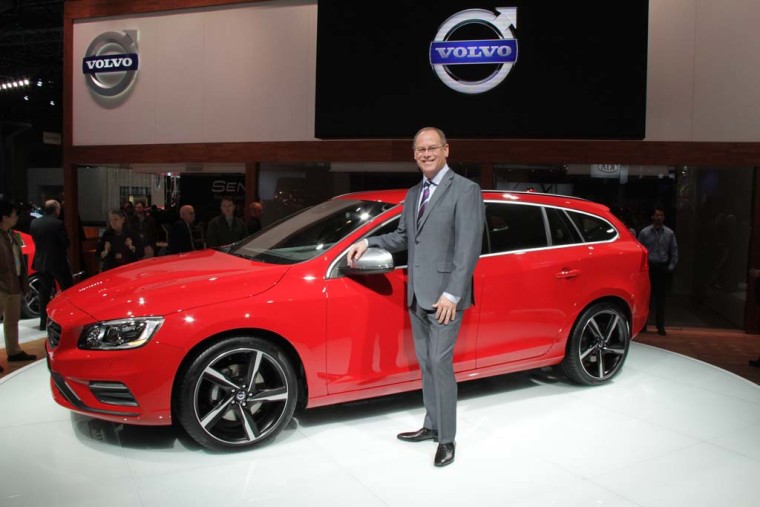Baby boomer Terry Keegan Sr. grew up in the back of a station wagon, watching the world go by out the back window. But when it came time to start his own family, Keegan opted first for a minivan and then a “cooler” SUV.
Now it’s his son’s turn to express his individuality. Terry Keegan Jr., a member Generation Y, also known as the millennials, paused for a moment at the New York International Auto Show this week before dashing off to check out the new Volvo V60 R-Design wagon.
Subaru Screams into NY Show with WRX Concept
“That’s not like the wagons my dad used to hate,” Keegan Jr. said. “I don’t see the wood panels. This thing is really hot. I could see myself driving it.”
A case of generational rebellion, maybe, but industry planners are watching closely to see whether the long-dismissed station wagon is finally – after several false starts – ready for a revival.
You don’t have to convince Europeans visiting New York’s annual auto show.
Slideshow: The 2013 New York Auto Show
“Wagons are big there,” says Andy Goss, the Brit now running Jaguar/Land Rover’s North American subsidiary. In fact, the maker has been gaining raves – and sales – with the recently launched “sporting brake” version of its mid-range XF model.
“Do you think we could sell a wagon here?” asks his boss, Jaguar/Land Rover global CEO Ralf Speth, echoing a question several senior executives visiting the New York show have been overheard asking at the show.
Few agree on the answer.
After Slow Start, Nissan Leaf Battery Car Sales Getting Charged Up
At the station wagon’s peak during the post-World War II baby boom, wagons were the body style of choice for American family buyers, accounting for millions of sales. They became an icon of U.S. suburban life.
But as boomers reached driving age, wagon sales declined in favor of just about anything else. And as boomers raised their own families, minivans took over as the symbol of ‘80s suburbia.
Then came the classic, truck-based sports utility vehicle, now also in decline, giving way to car-based crossovers that maintain rugged appearance but boast better mileage and on-road manners.
“And a lot of them are nothing more than wagons on steroids,” says Joe Phillippi, of AutoTrends Consulting.
Wandering through the auto show, Phillippi points to the Subaru Legacy Outback as an example of how the Japanese maker scored by adding cladding and raising the suspension.
Luxury Goes Electric with Mercedes B-Class Battery Car
The 2-box version of the Legacy is the best-selling vehicle in the U.S. that might be considered a wagon; American motorists snapped up nearly 118,000 last year.
“There’s always the possibility” the maker might add an undisguised wagon over the next year, says Tom Doll, president of Subaru of America, especially “if we could bring out a good, European-styled compact wagon.”
Perhaps no maker remains more closely identified with wagons than Volvo, which has long been known for its boxy designs that built it a cult-level following in the ‘60s, ‘70s and ‘80s. In fact, the Swedish maker also pulled back from conventional wagons in the U.S. over the last decade, focusing instead on an Outback-like approach with models like the XC60 and XC90.
Koreans Take on German Luxury Makers with Big 2014 Hyundai Equus
But the V60 R-Design gets it back into the market. “Volvo has the heritage, unlike any other company, when it comes to wagons,” which makes it possible to sell a vehicle like the V60 in a market that rarely still embraces wagons, said Doug Speck, the maker’s marketing vice president.
The maker highlighted its sportiest version, the V60 R-Design, at the auto show news conference, hoping that a 325-horsepower engine delivering 6.0-second 0 to 60 times would add a spark to the return of the Volvo wagon.
The millennials are beginning to shake up the wagon of yester-year, demanding more technology – both in the passenger compartment and under the hood – and downsizing. They seem to be looking for new product designs and segments that define their own identity.
